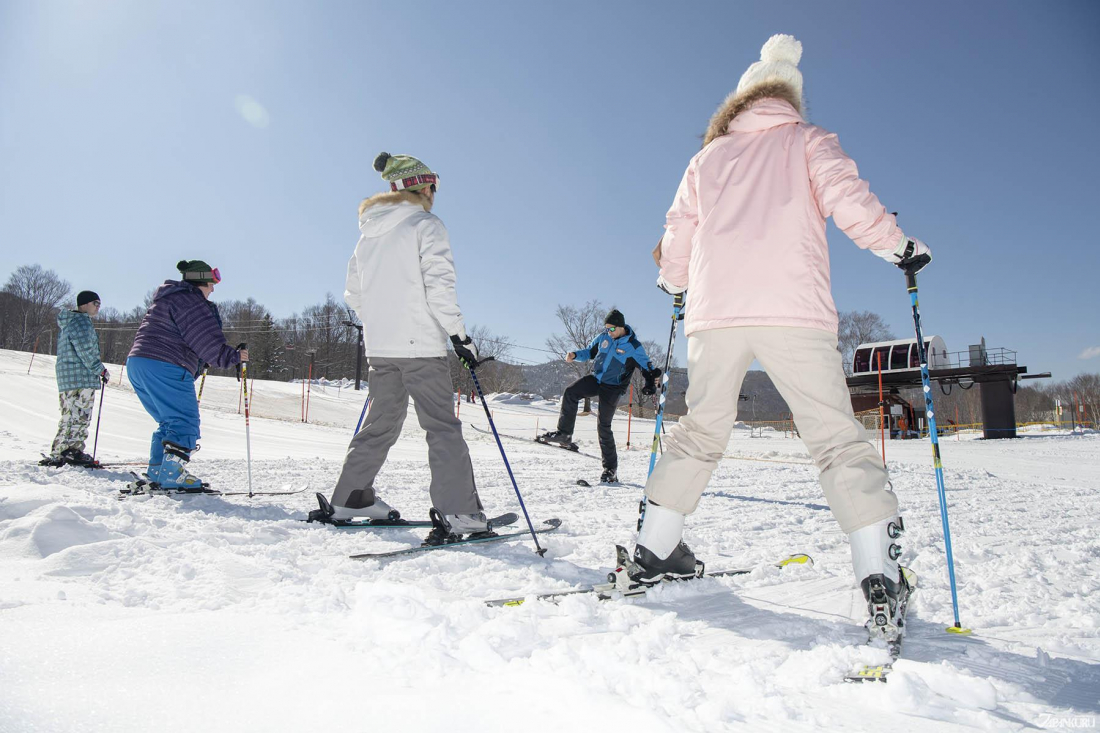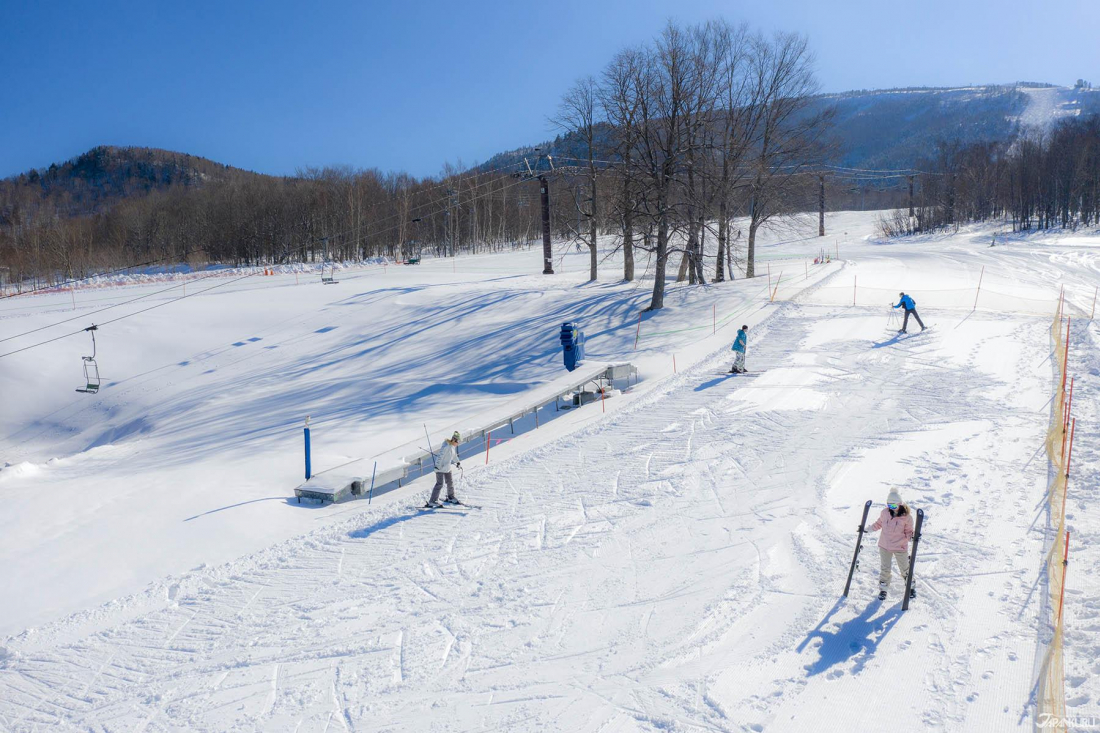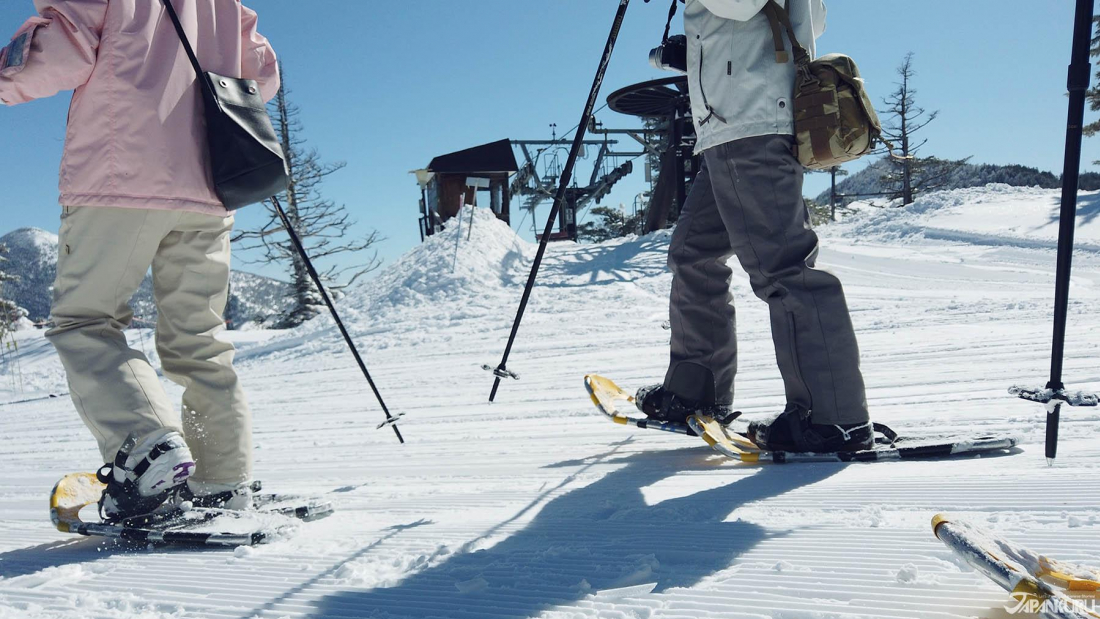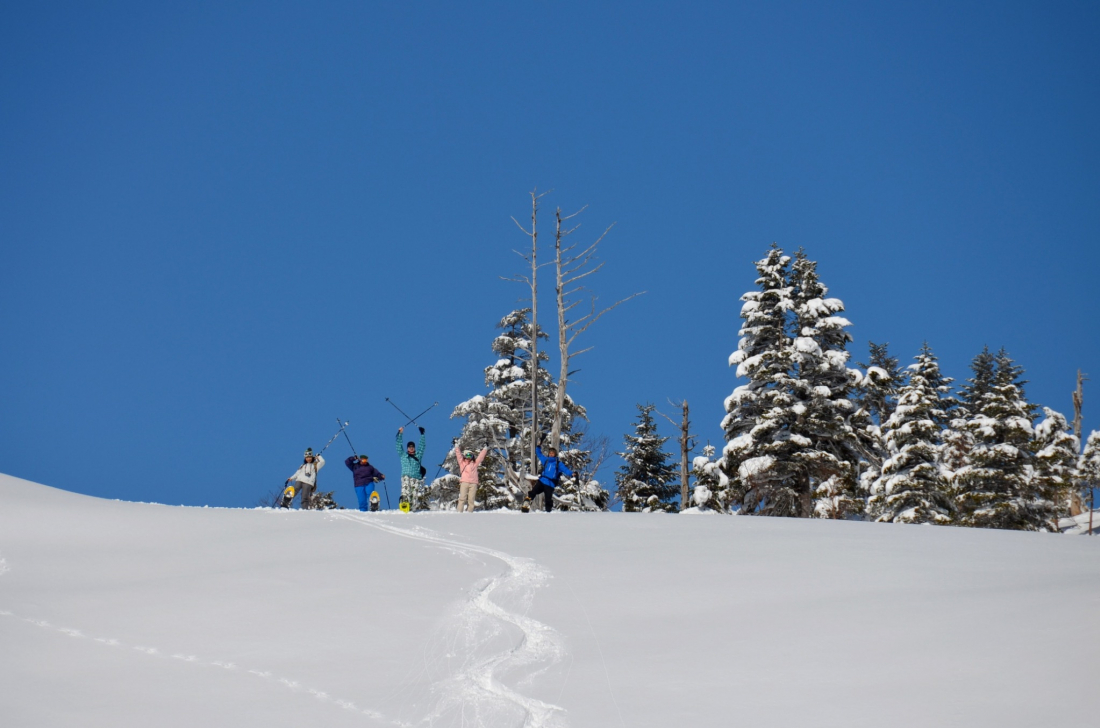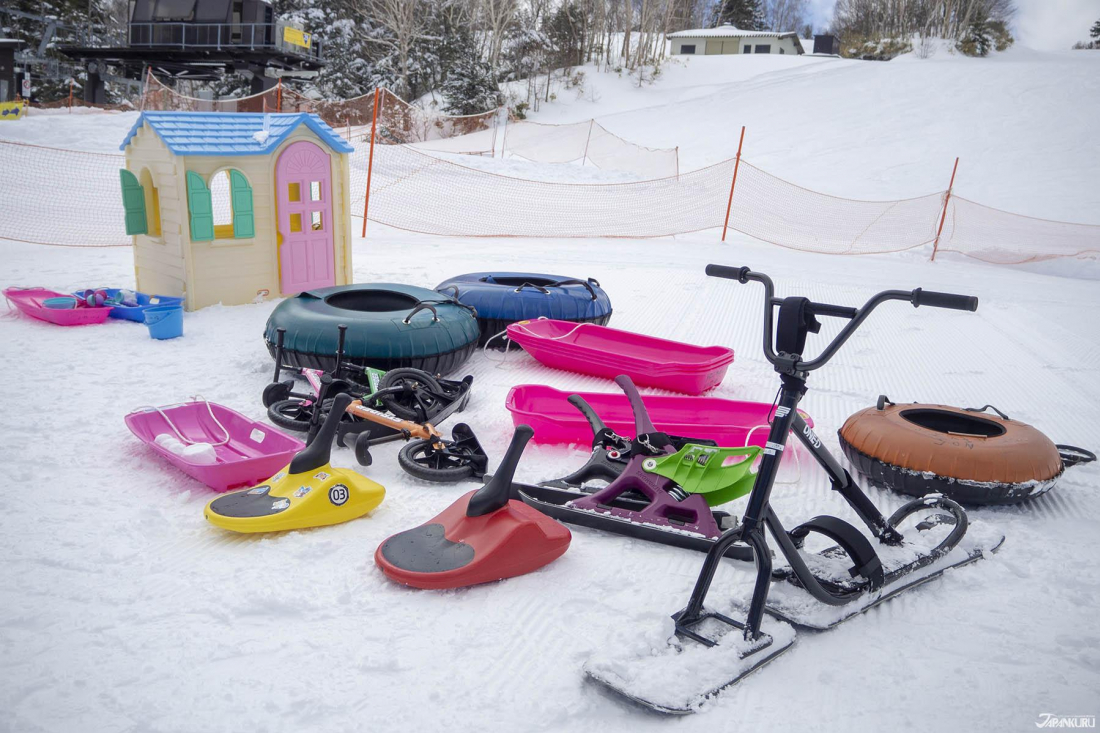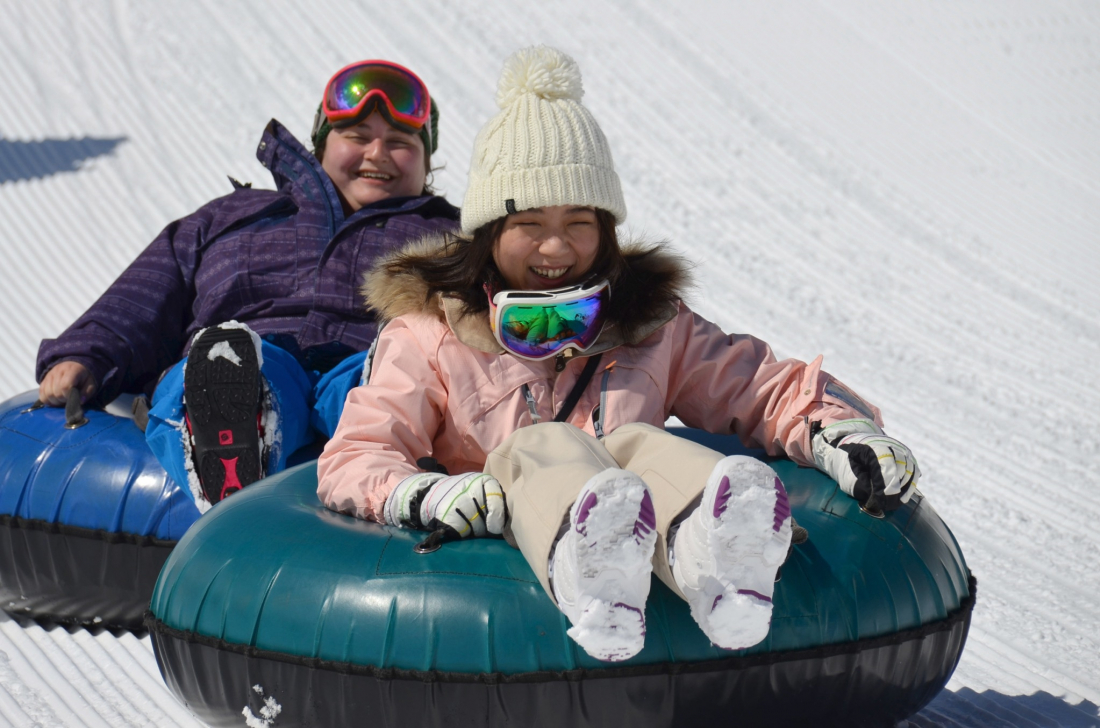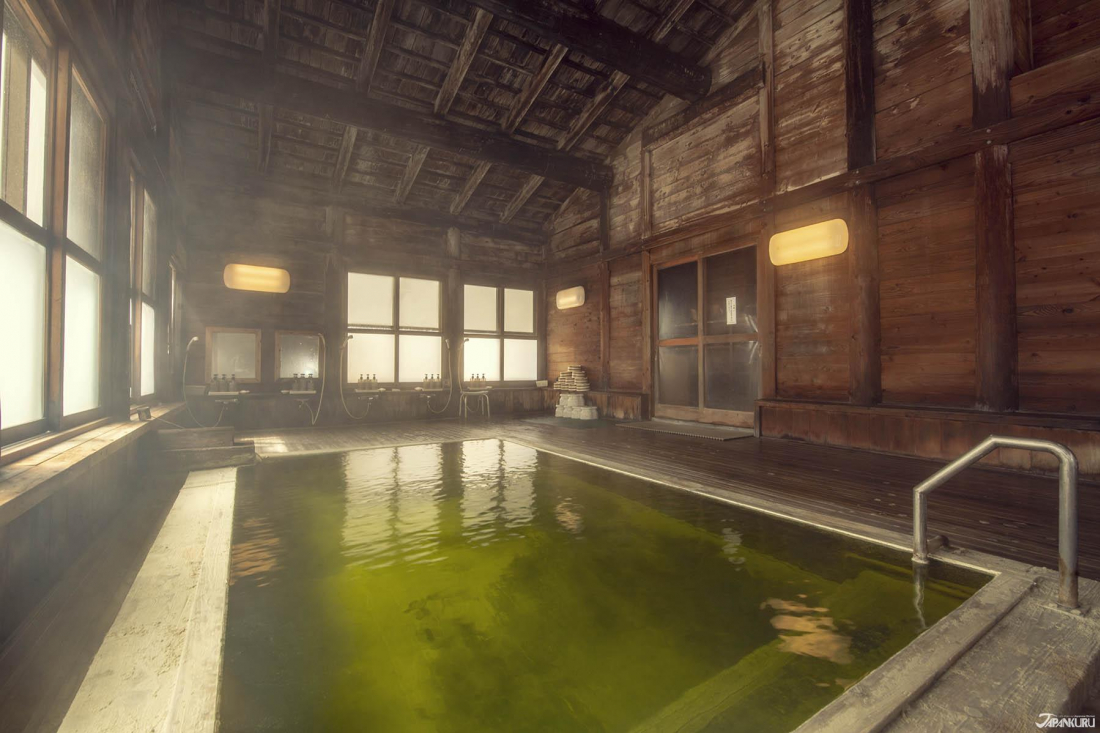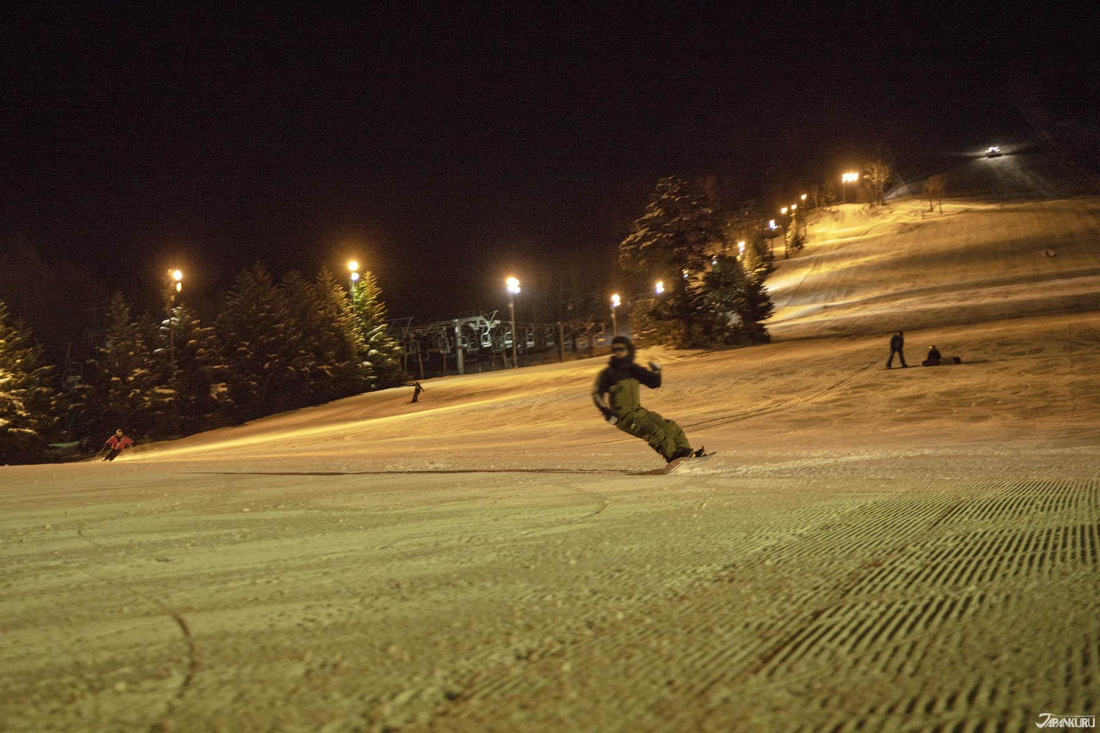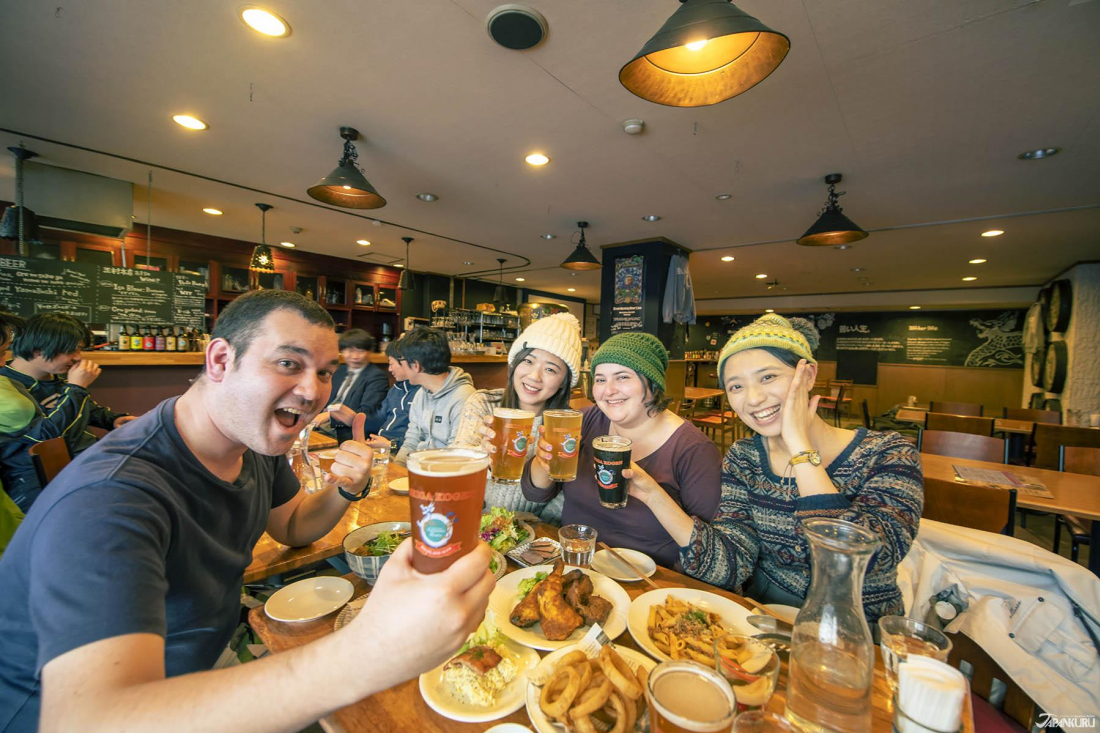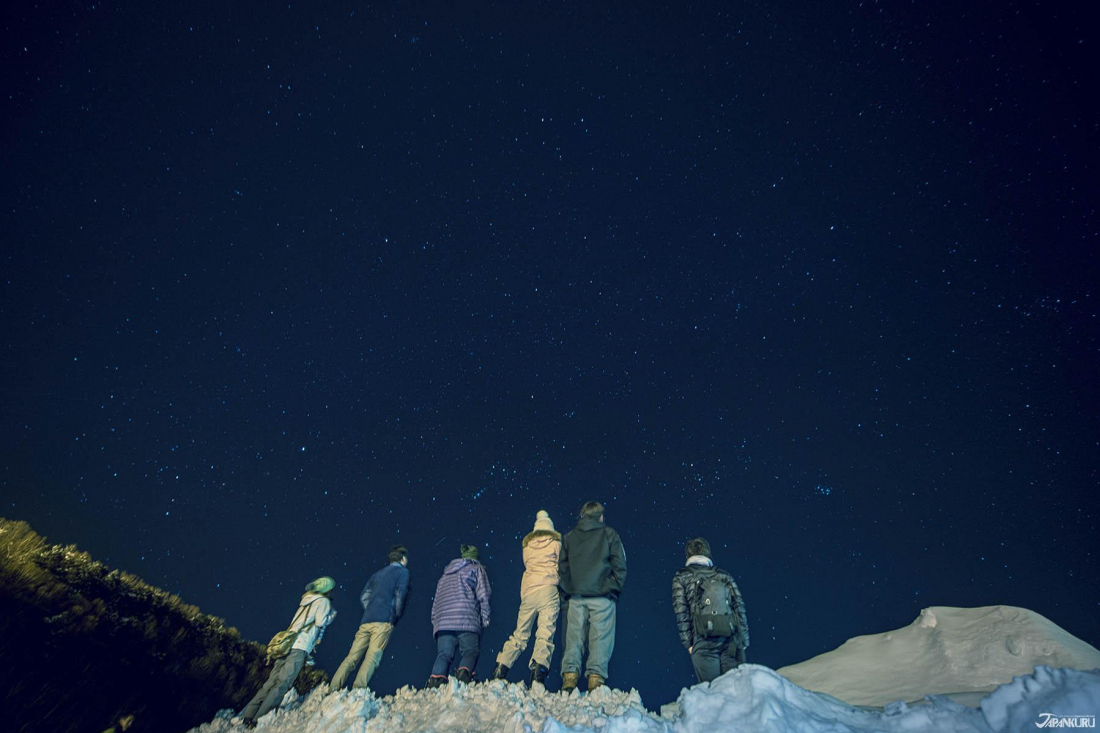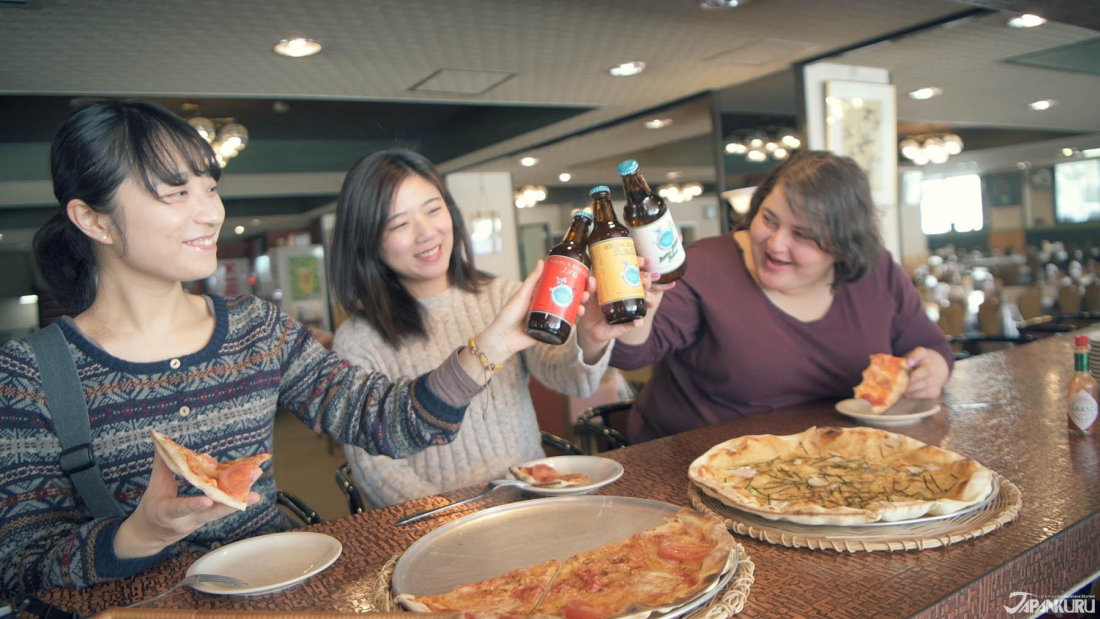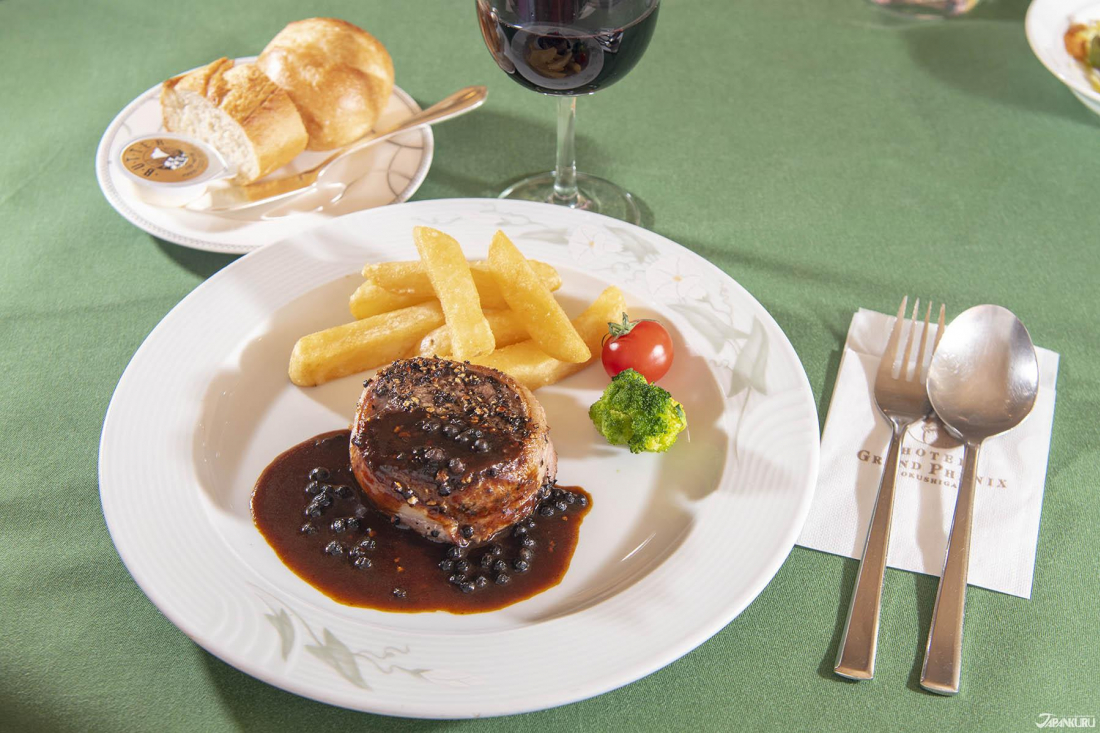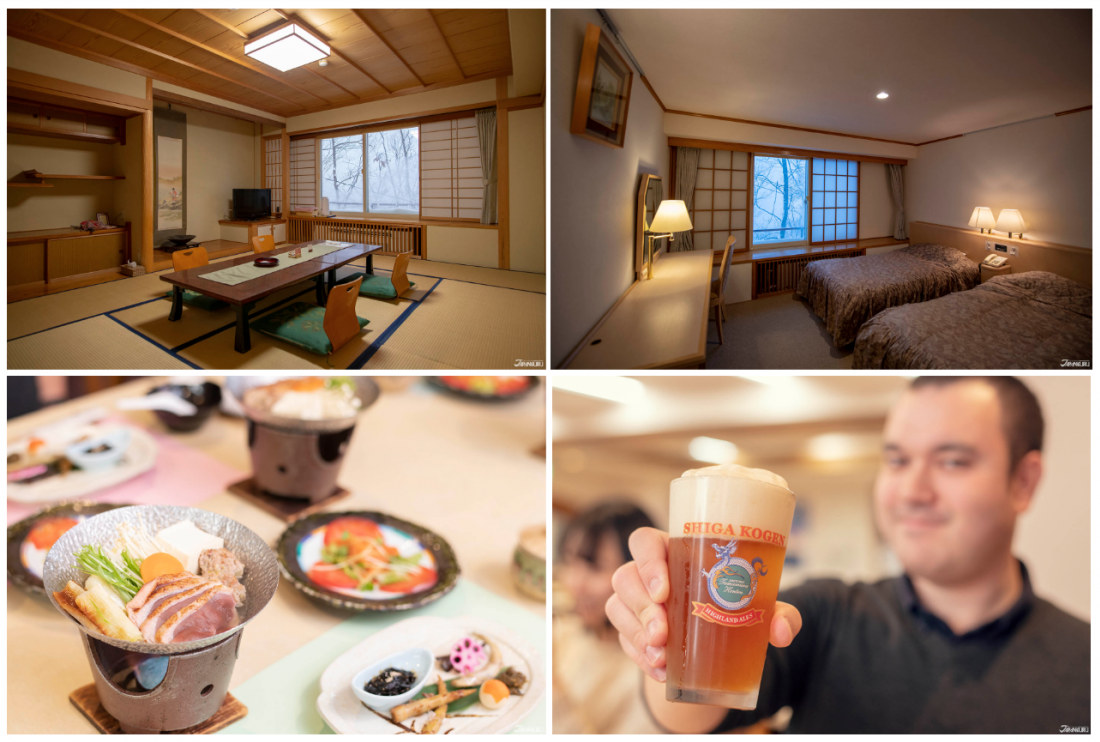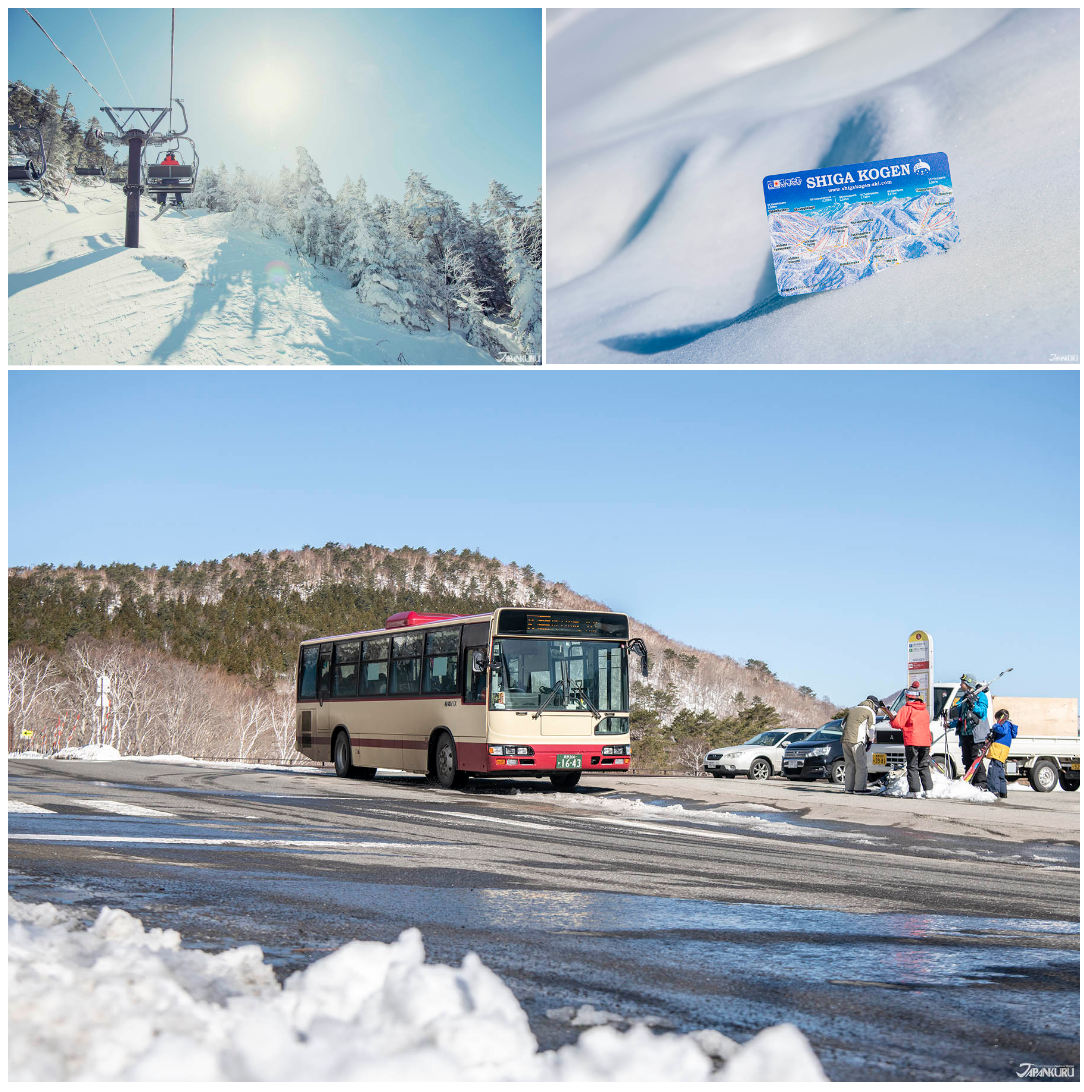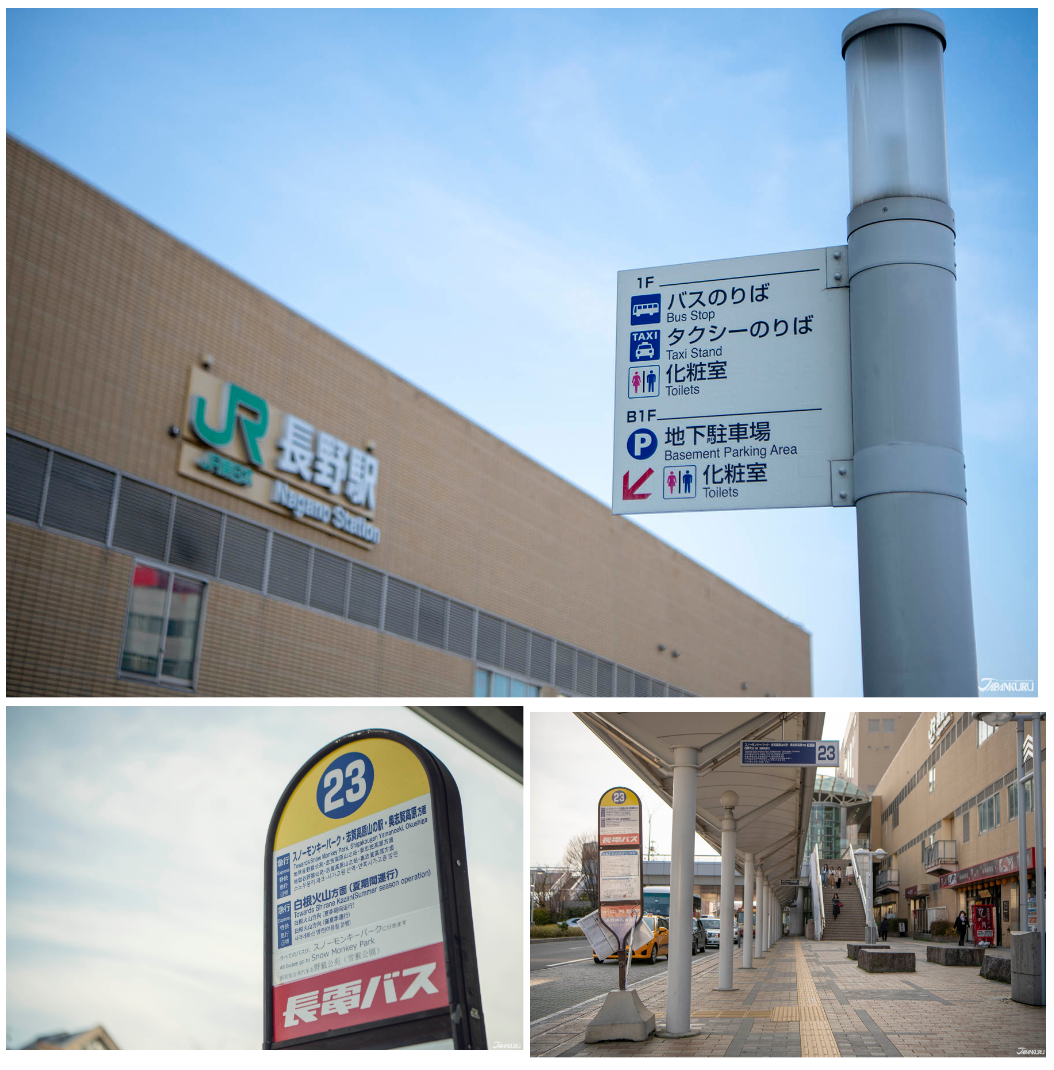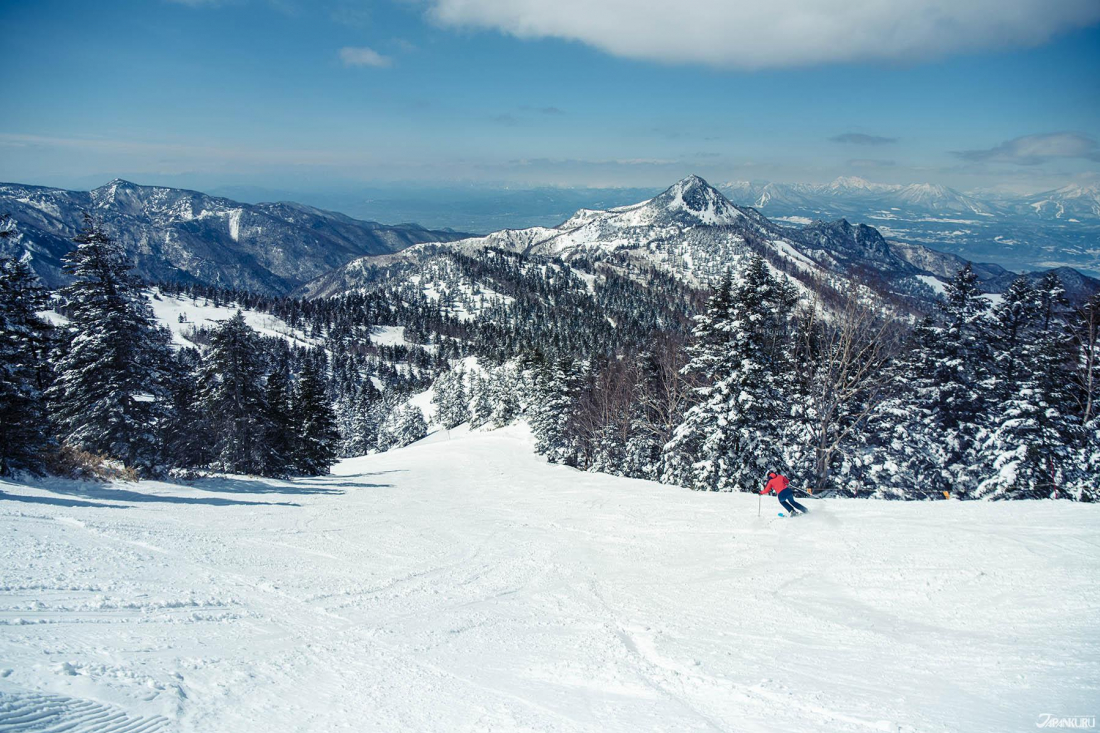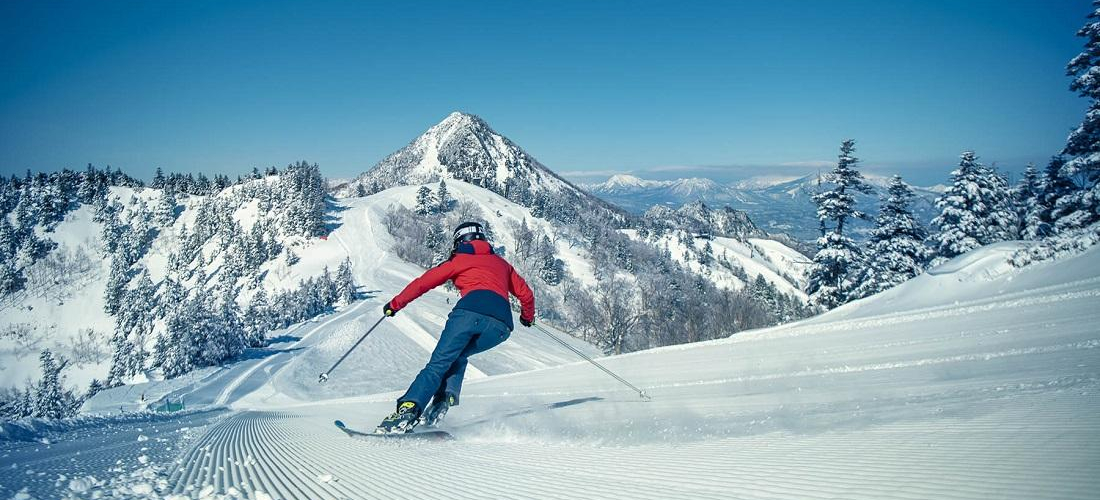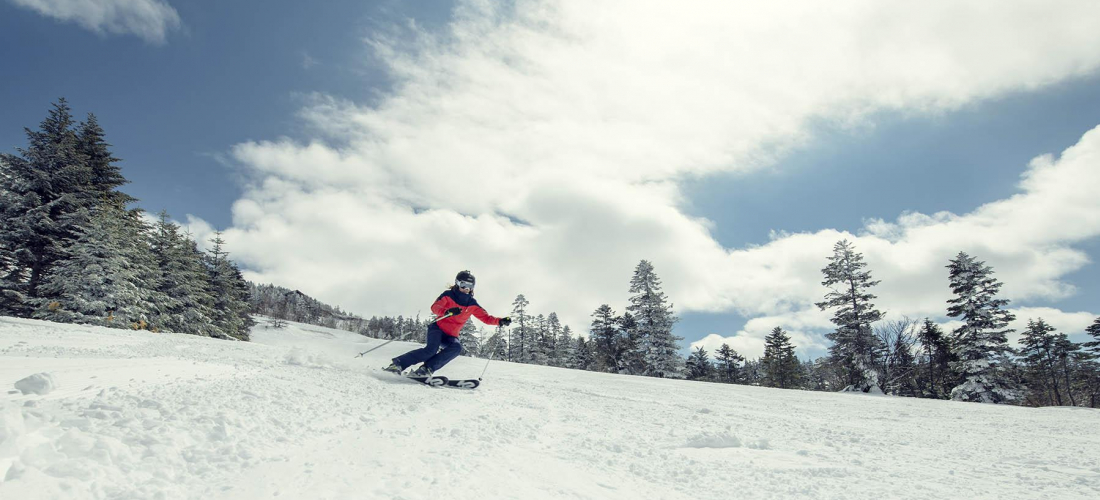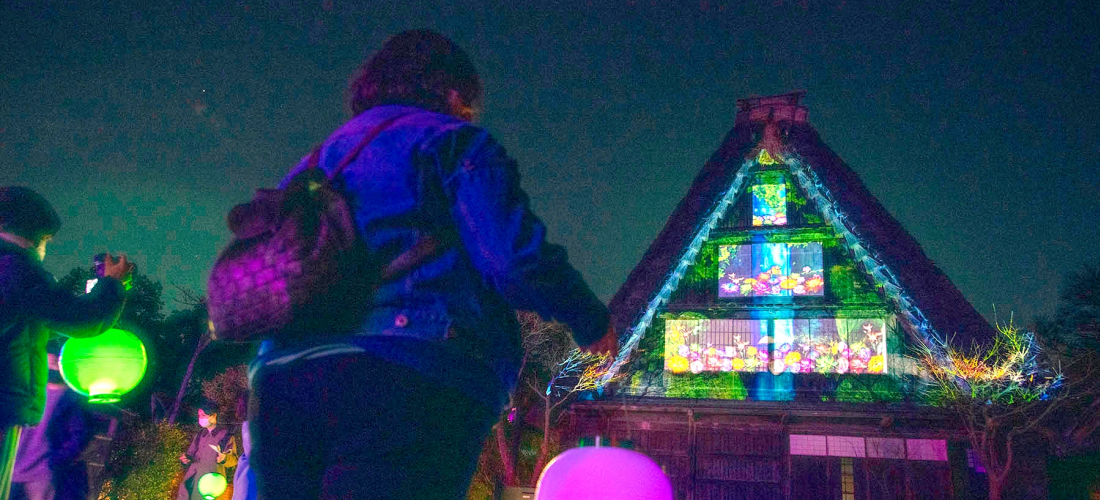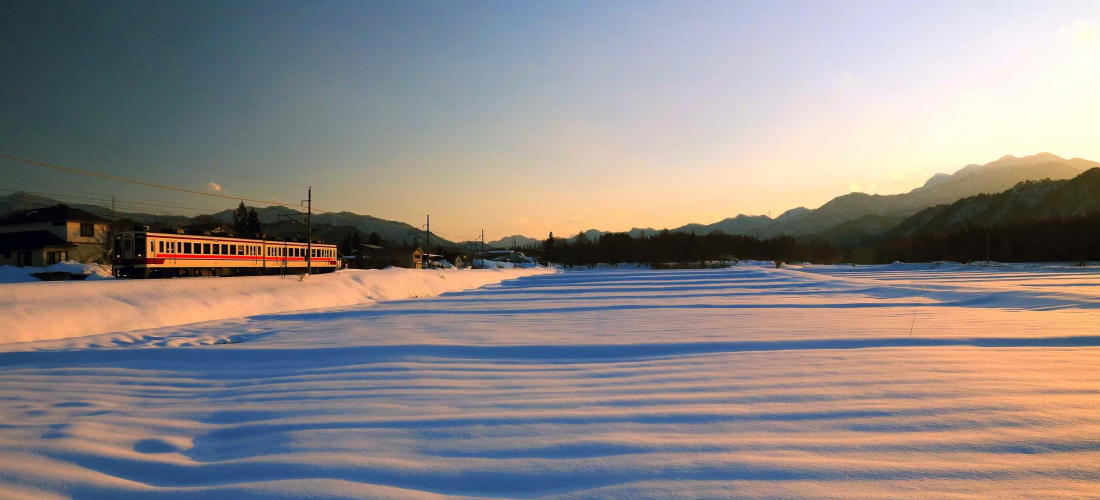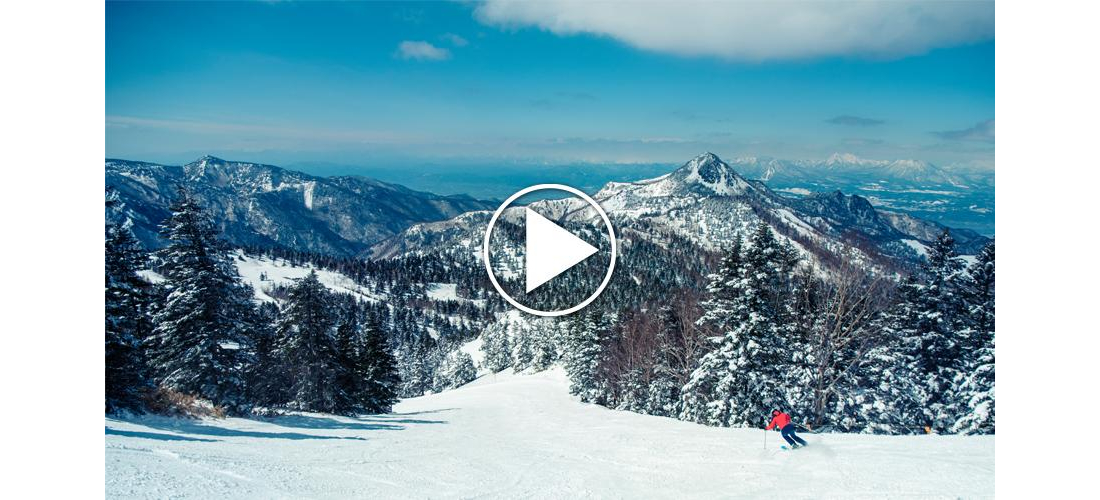
CONTENTS
Shiga Kogen Ski Resort in Nagano, Japan is a favorite among Japanese ski lovers, but you don’t need to be a pro to enjoy the fluffy Japan Powder snow and beautiful mountains!
The Charms of Skiing in Shiga Kogen Ski Resort (志賀高原スキー場), Inside a National Park
Topping out at elevations over 2,000 meters (over 7,000 ft), Shiga Kogen (also known as the Shiga Highlands) is a beautiful, mountainous region in the middle of Joshin'etsu-kogen National Park. Among the mountains known as the Japanese Alps, evergreen trees and magnificent blankets of white, fluffy snow mean the view is always fabulous in every direction, all year-round. But of course that snow isn't just beautiful. The high snow quality at Shiga Kogen is legendary, and the high altitude means heavy snowfall late into spring, making for a surprisingly long ski season. It's no wonder people call Shiga Kogen Ski Resort one of the best-kept secrets of Japan's ski lovers.
Not only is Shiga Kogen arguably home to Japan's highest official ski run (on Yokoteyama mountain), but it's also quite possibly the largest winter ski resort in Japan. The total area of 400 hectares includes 18 different ski areas, perfect for everyone from total novices to old pros. No matter their starting level, every skier is likely to find trails they love, and some good challenges. And to keep the large number of ski areas from getting inconvenient, Shiga Kogen has a free shuttle bus to get visitors from place to place, and ski lift passes that grant automatic access to every lift and cable car. Plus, take another bus just a short drive away from the ski area, and travelers will be delighted to find Jigokudani Monkey Park, home to Japan's famous onsen (温泉, hot spring) loving snow monkeys!
Also, did you know that Shiga Kogen was the location of some of the ski events during the 1998 Winter Olympics in Nagano! The ski resort has a long history of attracting winter-lovers, including both the best skiers in the world, and total beginners just excited to learn!
How to Get the Most Out of Shiga Kogen
① Ski Lessons & Beginner Skiing
Never seen a pair of skis in person before? No worries! We recommend you start your trip with a basic beginner ski lesson! At Shiga Kogen you'll find lessons of varying levels taught by profession teachers – everyone from little kids and families to skiers with experience can learn a thing or two. And the lessons are available in a variety of languages.
As a bunch of total rookies, the Japankuru ski team took a lesson in English, a 2-hour class for up to 9 people (5,700 yen in March 2020). None of us had any real experience skiing, and some of our team were putting on skis for the first time ever. Fortunately, though, we were all able to learn a little bit of basic technique, including how to slow down and (most importantly) stop! While the learning process included a few falls directly into the snow from those of us with less-than-perfect balance, the fresh new snowfall from the night before was unbelievably fluffy and soft, making the experience pretty pain-free! We were able to topple over without worrying too much. And once we had the basics down, our teacher took us up the mountain to coach us along an easier ski trail! By the end of the lesson, we all felt like we started to understand the joy of skiing.
② Snowshoes & Tea Time with a Mountaintop View
Skiing isn't the only way to have fun at Shiga Kogen! During the winter there are a variety of snowshoe hiking trips available throughout the many mountains of Shiga Kogen, and trips ranging from three to five hours. Sign up for a snow hike and you'll be provided with snowshoes and poles, a little like ski poles, and a professional guide who will take you up the mountain. Not only can the guide point out tons of beautiful easy-to-miss parts of the mountainside hikes, but they also bring hot tea to enjoy when you reach the peak of your trip. (Some hikes even include lunch, too.) If you're interested, you can check out what tours they offer and make reservations here.
The Japankuru team embarked on a trip up Mount Higashidate (東館山), looking up towards the Terakoya ski area, which started with a trip up a cable car they told us was almost 100 years old! Even before the hike began, we had an amazing view of the surrounding mountains, as the cable car speedily took us up to 2000 meters above sea level. If you follow our lead embarking on the same snowshow hike, and you want to see one of the ski trails actually used during the 1998 Nagano Olympics, you can get a good view from the terrace on the second floor of the cable car building.
③ Kids’ Parks, Where Snow Lovers of All Ages Can Play
These little areas dotted around the ski resort might be called kids' parks, but if you love to play in the snow, it doesn't matter how old you are – you should definitely stop by! They've got tools of all kinds to make playing in the snow just about as fun as it can be, and if you grew up in an area with snow days, you'll quickly be transported back to your childhood. Hop on a sled and slide down the hill, or try tubes and snow bikes! Start a little snowball fight! Skiing at Shiga Kogen is amazing, but there are lots of ways to enjoy the snow while you're there.
Each of the several kids' areas is a little bit different, but the Japankuru team visited one at Ichinose Diamond Ski Resort, where we could watch people skiing and snowboarding down the mountain, while we played to our hearts' content.
④ Onsen (Hot Springs) in the Snow
If your muscles are tired from a few days of skiing and climbing through huge piles of snow, then a visit to a local onsen (温泉, hot spring) is just the thing! Lots of travelers might adopt the Japanese tradition of bathing right before bed, but with this particular bath, you don't want to miss the daytime scenery!
Kumanoyu Onsen (熊の湯) has a history of 170 years, and is known for its distinct emerald-colored water, which is beautiful both indoors and out. But the ideal experience is to visit the outdoor bath, where snow piles on the rocks and boulders surrounding the steaming pool of greenish waters. Visitors who aren't quite used to the tradition of bathing naked with others will also be relieved – Kumanoyu offers little dress-style towels that you're free to wear into the water. Enjoy the spectacular bathtime view without a speck of anxiety.
What’s the Plan After Sundown?
Night Skiing
Of course, you don't have to stop skiing just because the sun goes down! Quite a few slopes stay open at night, well lit for safety, but dark enough for a touch of romance. It's a totally different atmosphere to ski at night, gliding through the snowy shadows.
Grab a Beer at Teppa Room
Drawing up a must-do checklist for when you visit Shiga Kogen? Don't forget to add Shiga Kogen Beer! (That's right, there's a local beer, too!) In the Ichinose area you'll find Teppa Room, a pub with just about every variety of Shiga Kogen beer on tap, giving brew lovers a few different options.
Stargazing in the Mountains
So high up and close to the sky, surrounded by dark, quiet mountains, it's no surprise the night sky at Shiga Kogen is full of beautiful stars. The photo below shows only a fraction of the brilliance we saw with our eyes, as we stood picking out our favorite constellations, and some new ones.
Let’s Get Practical – Planning a Trip to Shiga Kogen
Gear – Renting Skis & Everything Else You Need
Unless you're bringing your own gear with you, you'll need to outfit yourself with everything you need before you ever hop on a ski lift! Fortunately this is pretty easy in Shiga Kogen, with everywhere from hotels, to ski schools, and of course ski rental stores offering equipment in all sizes. Some places even let you rent cameras like GoPros along with your more practical gear!
The Japankuru team picked up everything we needed from a store called SNOWCAN in the Ichinose area. We rented ski boots and skis, snowboard boots and snowboards, poles, snow pants, heavy jackets, goggles, even hats!
SNOWCAN Ichinose Diamond Shop
Hirao, Yamanochi, Shimotakai District, Nagano
Official Website (jp)
Food – Brick Oven Pizza & High-End Hotel Food
While we already mentioned the great pub cuisine of Teppa Room, we've got some other suggestions for lunch! One of those is the brick oven pizza baked up at Shiga Riverside Hotel, which include both classics like margherita pizza, and Nagano specialties like a dessert pizza complete with local Nagano apples.
For a more upscale lunch, in an elegant Alpine resort-style hotel, we recommend one of the restaurants in the Grand Phenix Hotel. The beef tongue stew and steak with black pepper sauce are particular favorites, and a look out the window while you eat will grant you a view of the mountains.
Accommodations – 16 Different Hotel Options
Alongside 18 different ski areas, the size of the Shiga Kogen Ski Resort area means there's enough room for 16 hotels, giving travelers lots of options! And there are lots of deciding factors for where you might want to stay. Some hotels are particularly famous for their amazing onsen, like the Kumanoyu Hotel where we found Kumanoyu Onsen, drawing hot springs lovers. Location can also be a deciding factor; stay in the Ichinose area and you can drink long past sunset at the Teppa Room without having to worry about the last shuttle bus. Grand Phenix Hotel is known for lovely European-style architecture and delicious European food, but hotels like Shiga Sunvalley Hotel have Japanese-style suites with tatami floors, and traditional multi-course meals of Japanese cuisine.
Transportation – Shuttle Buses & Ski Passes
While you could certainly rent a car to get to Shiga Kogen and move around the area, you'll find that it's totally unnecessary when you get there, so why risk driving yourself in heavy snow? You might not expect it in the middle of the mountains, but Shiga Kogen has a functional shuttle bus system, which is free to use between 8:30 and 17:00 every day. Then, with just one ski pass card, you can touch it to a reader on any of the cable cars or ski lifts, and waltz on through! You'll be getting from your hotel to the mountaintop in no time.
Access – Getting to Shiga Kogen in the First Place
Thanks to a direct bus from Nagano station, access to Shiga Kogen is pretty simple.
⇩
⇒ Hokuriku Shinkansen (Bullet Train) ⇒
⇩
Nagano Station
⇩
⇒ Direct Bus (West Exit Bus Stop #23) ⇒
⇩
Shiga Kogen Ski Resort!
Before Heading Home, Visit the Onsen Monkeys Nearby
Jigokudani Yaen-Koen Monkey Park
Whether you've been doing some research on Shiga Kogen, or you just happened to notice one of the other major stops on the bus route to the ski resort, you've probably seen something or other about hot spring monkeys. That's right, there are monkeys living around Shiga Kogen, and they love natural hot spring baths! Just a short bus ride away is the Jigokudani Yaen-Koen Monkey Park, where the snow monkeys live, and a lovely hike through the woods will bring you to the steaming spring water pools where they soak away and groom their fur. Don't miss the babies!
Jigokudani Yaen-Koen Monkey Park (地獄谷野猿公苑)
6845 Yamanouchi-machi, Shimotakai-gun, Nagano
Official Website (en)
So, What Does Your Shiga Kogen Itinerary Look Like?
Which part of Shiga Kogen are you most excited about? The spectacular mountain views and snow-covered evergreens of Joshin'etsu-kogen National Park? The fluffy, dry Japan Powder snow that's so soft you'll want to dive right in? The 18 different ski areas and 16 different hotels? Let us know what you're looking forward to and what your plans look like, or shoot us a question if you have any, on the Japankuru twitter, instagram, and facebook!
Details
NAME:Shiga Kogen Ski Resort (志賀高原スキー場)
MAP
ACCESS:From Nagano Station, take the express bus to Shiga Kogen.
PROFILE
Follow us @Japankuru on Facebook, Instagram, and Twitter!
COMMENT
FEATURED MEDIA
VIEW MORE
・Accommodations for Odaiba Sightseers: Mitsui Garden Hotel Toyosu PREMIER ・住宿推薦 三井花園飯店 豐洲普米爾 ・오다이바 관광 맞춤 숙소: 미츠이 가든 호텔 토요스 프리미어 ・ค้างคืนที่ Mitsui Garden Hotel Toyosu Premier โรงแรมสำหรับผู้มาเยือน Odaiba #japankuru #odaiba #tokyo #tokyotrip #japantrip #japantravel #mitsuigardenhotel #mitsuigardenhoteltoyosupremier #tokyohotel #odaibahotel #toyosu #tokyoview #tokyobay #rainbowbridge #미츠이가든호텔토요스프리미어 #오다이바 #오다이바맛집 #오다이바건담 #오다이바해변공원 #오다이바야경 #오다이바온천

Nagano Prefecture is famous for delicious soba noodles, and in the city of Ueda, you can learn from the experts! Local aunties run this cooking class, teaching you everything you need to know to make your own delicious plate of soba noodles entirely from scratch. #japankuru #soba #sobanoodles #japanesefood #travelexperience #japan #japantrip #ueda #nagano #japaneseculture #japanexperience #daytrip #daytour #cookingclass #japanesecookingclass #上田市 #そば作り #소바체험 #우에다시 #나가노여행 #일본소바

Kuramae Shrine is known for its early-blooming cherry blossoms and its gorgeous golden mimosa blooms, making it a great sakura spot for travelers arriving in Tokyo a little early for the main cherry blossom season. It’s also tucked away in a neighborhood packed with trendy cafes and coffee shops. Kuramae is a lovely place to spend the day. 🌸☕️ ・ #japankuru #kuramaeshrine #kuramae #tokyo #tokyotrip #cherryblossom #cherryblossoms #mimosa #tokyocherry #花見 #蔵前神社 #ミモザ #桜 #東京 #Japan #日本 #일본 #Japon #ญี่ปุ่น #Japão #Japón #япония #japantravel #日本旅行 #日本旅遊 #일본여행 #japan_of_insta #japantrip #traveljapan

Local Japanese Favorites at the Okinawa Don Quijote ② Ohta’s Isan, the digestive aid of the Japanese people ・ ・ 2024唐吉訶德不可不知的好物推薦② 日本國民消化小幫手:太田胃散 ・ ・ 오키나와 돈키호테 숨은 꿀템2. 일본 국민 소화제! 오타이산 #japankuru #okinawa #donki #沖縄 #오키나와 #오키나와여행 #오키나와돈키호테 #일본쇼핑리스트 #오타이산 #일본소화제 #太田胃酸 #ohtasisan

Happy Valentine's Day from the Japankuru team! May your day be full of sweet chocolates and sweet nothings. 💕 Or, if you're like a rising number of women in Japan, take the opportunity to treat yourself! 🍫💝💆 • Find out more at Japankuru.com! (Link in bio.) • #japankuru #valentinesday #valentineschocolate #japanesechocolate #japaneseculture #バレンタイン #バレンタインチョコ #メリーチョコレート #Japan #日本 #일본 #Japon #ญี่ปุ่น #Japão #япония #japantravel #日本旅行 #日本旅遊 #일본여행 #japan_of_insta #japantrip #traveljapan #japan🇯🇵 #japanlife #igerstokyo #explorejapan #japanfocus #enjoyjapan #japantravelphoto

Japankuru Coupon: BEAMS fashion, accessories, lifestyle goods, and more! BEAMS 5% Discount Coupon ▶︎ Validity Dates: February 1 ~ February 29, 2024 ▶︎ Discount: 5% off all products in-store ▶︎ Usable At: BEAMS stores throughout Japan (all stores except BEAMS JAPAN Izumo and BEAMS JAPAN Nikko) ▶︎ Details: Please present this coupon page before payment to receive your discount! This coupon is also valid in combination with tax-free discounts/refunds for foreign tourists. (Tax-free shopping is only available at some BEAMS locations.) Some products may not be eligible for discount. ・ ・ ・ BEAMS - JAPANKURU優惠折扣券 BEAMS 2024年2月限定特別優惠券 店內全部商品95折 ▶︎使用期間:2024/2/1到2024/2/29 ▶︎使用範圍:日本全國店舖 ▶︎使用方法:結帳時請務必事先向店員出示本優惠券,若未出示本優惠券恕無法享有本優惠。本優惠券可搭配免稅優惠一併使用,但不排除特定門市無法使用本優惠券。此外,不排除特定商品不適用本優惠券。 ・ ・ ・ 「빔즈(BEAMS) x 재팬쿠루(JAPANKURU)」스페셜 할인 쿠폰 빔즈(BEAMS) 5% 할인 쿠폰 ▶유효기간: 2024년 2월 1일 ~ 2월 29일(한 달 동안) ▶︎할인율: 매장 내 전 상품 “5% 할인" ▶︎해당 매장: 일본 전국 빔즈 (BEAMS) 매장 (BEAMS JAPAN이즈모、BEAMS JAPAN닛코는 쿠폰 할인 대상 제외 점포입니다) ▶︎상세 내용: 결제 전 본 쿠폰 페이지를 제시하면 정가대비 5% 할인된 금액에 구매하실 수 있습니다! 본 쿠폰은 외국인 관광객들을 대상으로 하고 있으므로 면세 혜택(빔즈 일부 매장)과 별도로 추가 할인이 가능합니다. (일부 매장 및 제품은 대상에서 제외될 수 있습니다.) #japankuru #beams #beamsjapan #beamsginza #coupon #재팬쿠루 #빔즈재팬 #빔즈 #일본여행 #일본쇼핑 #일본쇼핑리스트 #銀座 #東京 #tokyoshopping #japankurucoupon



